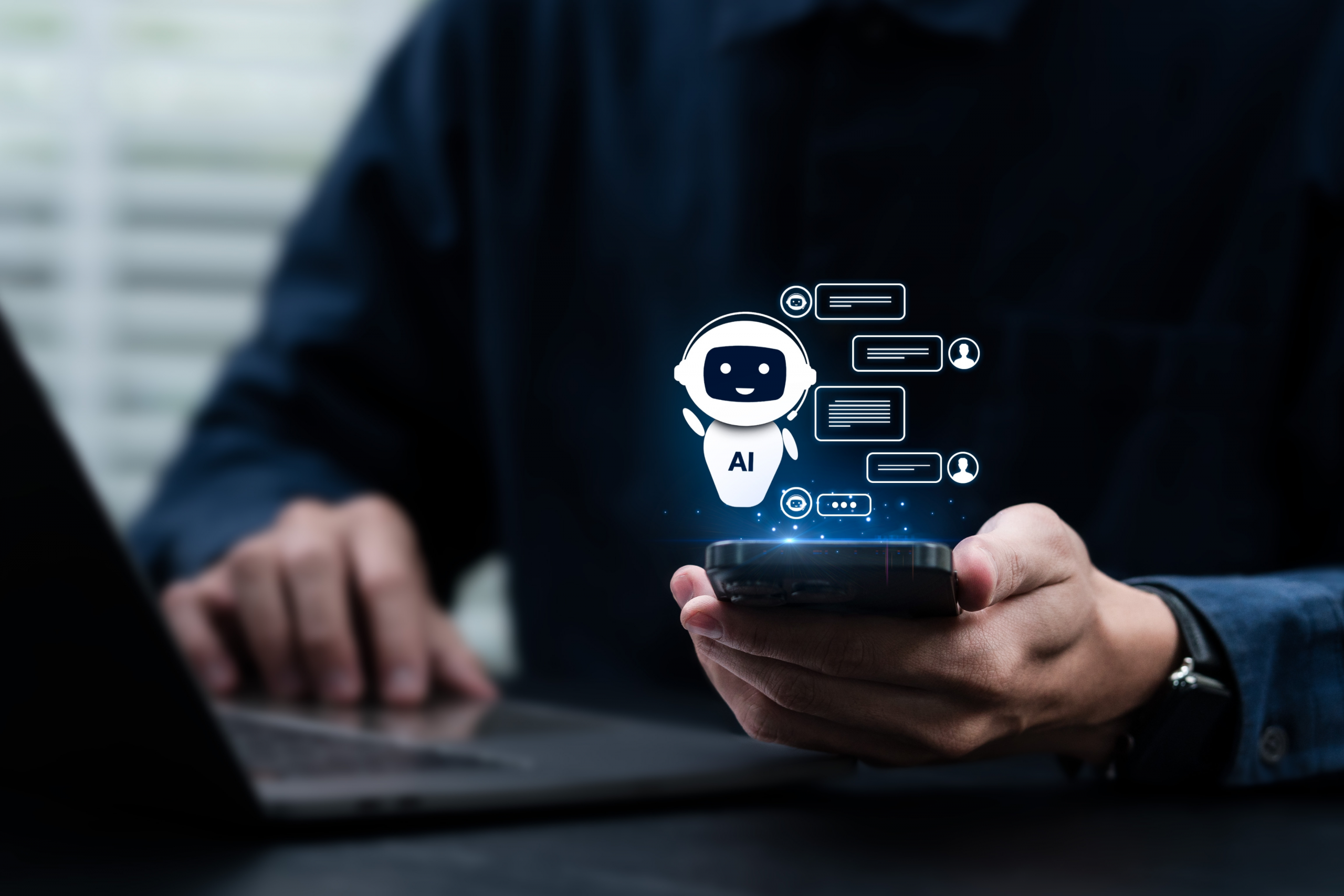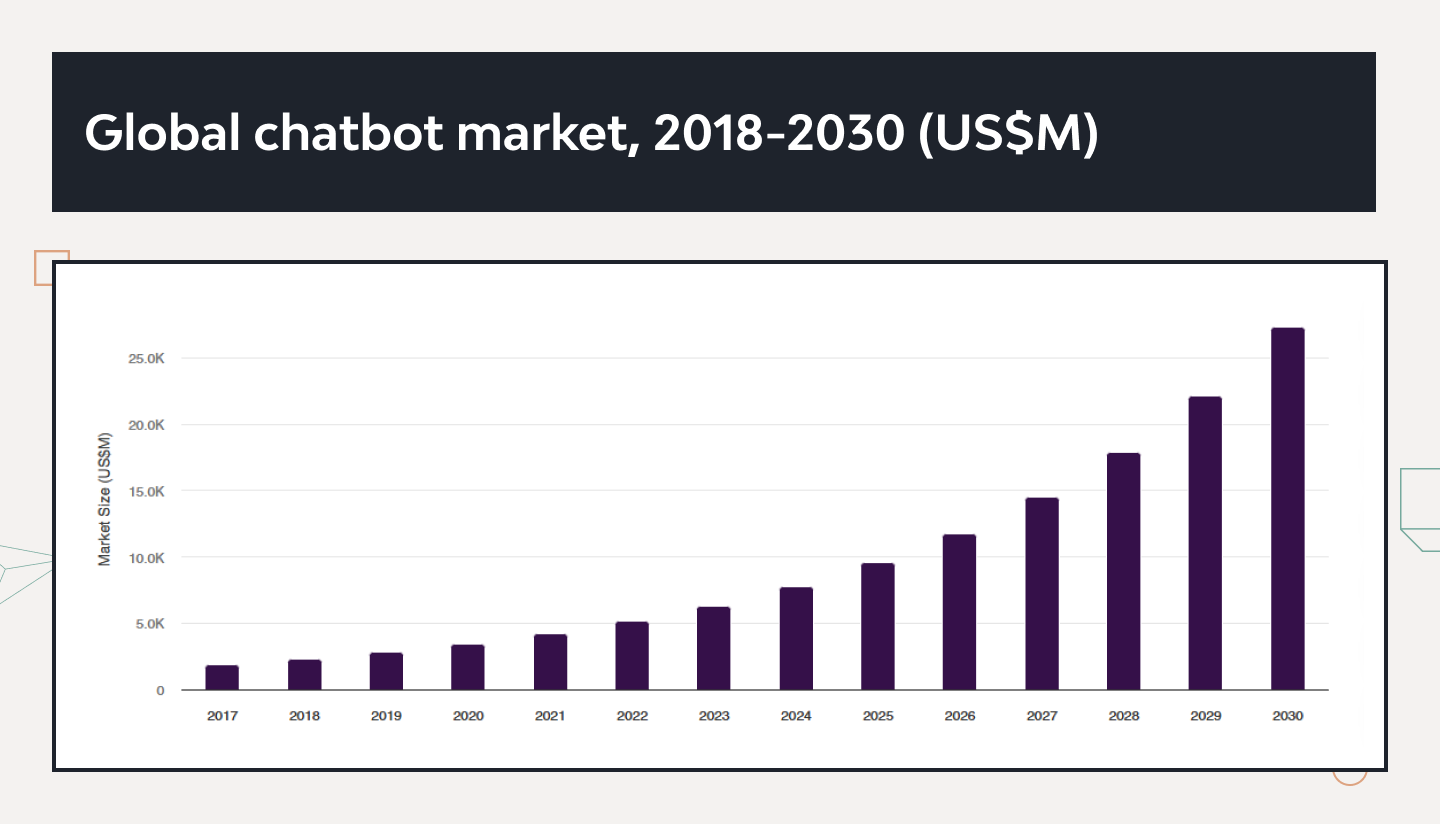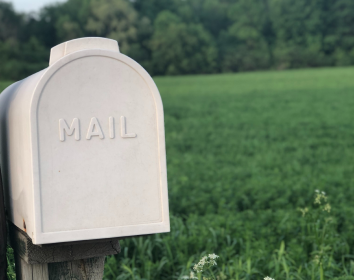How to Make an AI Chatbot in Python: A Comprehensive Guide

In the early third millennium, chatbots are taking modern, digitally driven businesses by storm. They bring value to multiple companies across virtually all verticals, essentially automating many workflows. Their efficiency can be dramatically enhanced by leveraging top-notch programming languages (such as Python) and AI-powered technologies.
This article explains what a Python AI chatbot is, exposes the types and use cases of such solutions, offers a step-by-step guide to creating an AI chatbot using Python, and dwells on the roadblocks development teams can face during the SDLC.
What is an AI chatbot?
AI chatbots are software programs that integrate natural language processing (NLP), large language models (LLMs), and machine learning to maintain human-like conversations. They can understand textual or audio input, produce contextual responses, and improve by learning from past interactions.
Such tools find broad application in multiple industries, providing the following benefits:
- Robust customer service. Bots can handle dozens of calls and queries simultaneously, working around the clock without days off or vacations, thus accelerating problem resolution.
- Task automation. The lion’s share of clients’ questions is simple and repetitive, so chatbots can be programmed to handle them hand over fist. The employment of AI-based technologies allows them to respond to even more complex queries.
- Cost reduction. With chatbots, organizations don’t need a large customer support workforce, saving a pretty penny.
- Improved customer experience. Instead of waiting for a human representative to answer the call, customers can interact with a machine and solve their problems quickly.
Given such significant assets, the global chatbot market is experiencing a steep surge, with revenue forecasted to increase more than three and a half times within five years, resulting in a remarkable CAGR of 23.3%.
Since it is considered the most suitable programming language for building such solutions, it is natural for developers to craft an AI chatbot using Python. How to build an AI chatbot in Python? Before diving headlong into the process, you should clarify the specifics of this software tool. Depending on their underlying principles, Python AI chatbots are divided into three basic types.
Types of Python AI chatbots
When you decide to build an AI chatbot using Python, you should have a clear vision of what you are up to.
Rule-based chatbots
Living up to their name, they function according to pre-wired rules. Such chatbots are the simplest to create, but they can deal with a limited scope of tasks, excelling at basic question-and-answer functions. In enterprise settings, they are employed to respond to FAQs, schedule appointments, or run elementary surveys.
Generative AI chatbots
These are genuine Python AI chatbots. Being driven by LLMs and trained on a plethora of textual data, solutions like ChatGPT, Gemini, or Claude acquire human-like reasoning capabilities and can “upgrade their skills” over time. As a result, they can generate coherent, relevant, and consistent sentences, which expands their sphere of usage.
Hybrid chatbots
As it is easy to guess, they blend the peculiarities of the two above-mentioned chatbot types. When dealing with simple queries, they rely on pre-defined rules, whereas for more complex queries, machine learning capabilities are utilized. Such a combination imparts greater flexibility to hybrid chatbots, turning them into a multi-purpose tool adaptable to various scenarios.
Definitely, when building an AI chatbot using Python, you should prioritize the latter two choices as higher-level solutions. However, it is mission-critical to ensure the chatbot type aligns with the use cases you have in mind for it.
Python AI Chatbots: Real Use Cases
Nowadays, enterprises utilize AI chatbots in multiple shop floor operations, including:
Customer service
This is the primary use case for chatbots. They function 24/7, relieve the workload on human personnel, reduce customers’ waiting time, and even provide tailored recommendations.
Lead generation
Chatbots engage site visitors, collect information about them, qualify leads, and guide potential customers through all steps of the sales funnel.
Employee onboarding
They can guide staff through training and ensure their constant access to the company’s knowledge base.
Streamlining the hospital pipeline
Chatbots automate appointment scheduling, send reminders, register cancellations, assist with symptom identification, and even offer mental health support.
Facilitating education
When appropriately crafted, chatbots not only assist students with course navigation and academic program selection but also provide feedback on assignments and offer personalized learning experiences.
In fact, there are dozens, if not hundreds, of real-world examples of AI chatbots built with Python, because for an AI chatbot, Python is the most natural choice of a programming language thanks to its mild learning curve, extensive libraries, and large user community.
How to make an AI chatbot in Python: Step-by-Step
We at Django Stars adhere to a straightforward roadmap when we create AI chatbot using Python.
1. Setting up the Python environment
Before making any move, ensure that you have the appropriate Python version installed (3.8 or higher). Then, create a virtual environment using tools such as venv or conda.
2. Installing libraries
The three pillars we rely on during chatbot creation are NLTK (for building tokenization, sentiment analysis, and other text processing tasks), SpaCy (for entity extraction and latent parsing), and ChatterBot (to streamline training and response generation). Django or Flask can be added for web development and binding the chatbot to the UI. Just don’t forget to connect your future chatbot to external APIs.
3. Selecting the model
Consider the chatbot’s use case and the complexity of tasks it will handle to determine whether to choose a rule-based, ML-based, transformer-based, or hybrid model.
4. Implementing basic chatbot logic and conversation flows
To do that, you should understand users’ intent (questions, requests, calls for help) and use it as a benchmark for generating responses. Additionally, ensure that you maintain context across all conversation turns.
5. Training the model
Now is the time to train your model. What data to utilize? NLTK and ChatterBot provide pre-trained data from routine conversations. The major tip for improving chatbot accuracy and engagement is to involve your training data (from chat logs, FAQs, etc.), which will allow you to tailor it to your specific needs.
6. Integrating the chatbot
Once the solution is crafted, create a web app that integrates the chatbot and provides connections to social media and third-party platforms (such as WhatsApp, Slack, and others) via their respective APIs.
7. Testing and deploying your Python AI chatbot
Finally, have a pilot run of the chatbot, fine-tune its responses, refine its accuracy, and launch the software for users to enjoy.
When you build an AI chatbot using Python, the ultimate success of the project depends on your ability to bypass pitfalls and bottlenecks along the way.
Python AI chatbot development challenges
We recommend that companies focus on the following challenges when they build an AI chatbot using Python.
1. Infrastructure cost
Problem: An on-premise computing power to train and operate LLMs often proves insufficient. Besides, if you access pre-trained LLMs provided by third parties, you should pay a fee that may amount to a significant sum down the line.
Solution: For some chatbots, straightforward and inexpensive LLMs will do. One more way to reduce costs is to utilize scalable pricing plans offered by cloud providers, which enable you to pay only for the resources you actually use.
2. Hallucination
Problem: Although LLMs have recently shown significant improvement, they often generate inaccurate output. This occurs due to model limitations and biases within the training data.
Solution: The risk of hallucination can be minimized by leveraging RAG to expand the model’s knowledge base. Plus, you can introduce human-in-the-loop elements and fine-tune models manually to eliminate incorrect information.
3. Data privacy and security
Problem: Given the vast bulk of training data, you always run a risk of it being accidentally exposed or intentionally tampered with by cybercriminals in transit or at rest. If it happens, you may suffer financial loss or reputational damage.
Solution: End-to-end encryption, anonymization, access control, and other security measures should be implemented throughout the entire SDLC.
4. Integration
Problem: The chatbot does not function as a standalone tool. It must play well with other components of your enterprise ecosystem (CRM, ERP, database, apps, etc.).
Solution: APIs, middleware, and programming frameworks will help you marry all these solutions successfully.
5. Deployment and scaling
Problem: The chatbot’s performance, scalability, and deployment may get complicated as the solution evolves.
Solution: Develop the chatbot with scalability in mind and rely on flexible cloud services. Besides, performance monitoring should become a regular practice, enabling you to optimize the solution’s functioning when necessary.
Evidently, creating a Python AI chatbot is a no-joke endeavor that should be entrusted to specialists in Python development and AI-based software. Django Stars ticks both boxes. We can build a first-rate Python-based AI chatbot within time and budget to enable your company to enhance its operations.
Key takeaways
Chatbots are universal tools used by enterprises across multiple industries to facilitate human-like conversations with employees and customers. Powered by AI-fueled technologies (primarily ML, NLP, and LLMs), such software programs can understand questions, generate context-driven responses, and improve over time during operation. When creating an AI chatbot, Python is often the programming language of choice.
Depending on the complexity of their mechanisms, chatbots can solve a range of tasks, from simple to sophisticated, related to customer support, employee onboarding, lead generation, appointment scheduling, and more. Their employment allows organizations to automate many tasks, relieve pressure on support personnel, reduce associated expenses, and enhance the customer experience.
How to create an AI chatbot in Python? You should follow a straightforward roadmap and address common challenges. However, the main prerequisite for building an AI chatbot in Python is hiring a competent vendor to oversee the project.
Next steps
The first thing you should understand is what tasks the chatbot-to-be will perform. For simple assignments, you won’t need to build an AI chatbot using Python. You can leverage no-code tools and create a simple chatbot. For more sophisticated solutions, you should embrace code-based practices. Here is a summary of how to make AI chatbot in Python.
- Leveraging venv of conda, set up the Python environment based on the language’s latest version (starting with 3.8).
- Install Python libraries (SpaCy, Chatterbot, and NLTK).
- Choose the AI model.
- Implement conversational flows and chatbot logic.
- Train the model, using both universal and niche-specific data.
- Integrate the chatbot into your current infrastructure and establish its connection to third-party systems via a network of APIs.
- Test the solution’s operation, address issues, fine-tune the performance, and deploy the chatbot.
- What’s the best approach to developing an AI chatbot in Python?
- The complexity of the future product determines the choice of the approach. For basic-level solutions with simple logic and straightforward workflows, a no-code approach is sufficient. For more versatile use cases, an AI-based chatbot in Python is a better fit. It hinges on NLP and RAG, allowing for greater control and enabling the creation of more sophisticated scenarios with high-level logic automation.
- What Python frameworks and libraries do you use to build AI chatbots?
- The best Python libraries for AI chatbots include ChatterBot (for crafting core chatbot functionality), ChatterBot Corpus (for training data), SpaCy (for advanced text processing), and NLTK (for natural language processing). As for frameworks, we use LangChain or CrewAI to integrate LLMs into the solution.
- How do chatbots use Retrieval-Augmented Generation (RAG) technology?
- It allows chatbots to use both an internal knowledge base and external data sources when searching for an answer to a question. After being asked, a RAG-based chatbot sifts through available sources (database, knowledge base, and third-party sources), retrieves all the information it can find, integrates it, and sends the prompt to the LLM. Using this prompt, the model can produce a more accurate and knowledgeable response.
- Can I train a chatbot using my own data?
- Not only can you, but you should. Training your AI chatbot with example data from your database will allow you to obtain a solution that dovetails into your organization’s specific needs. Moreover, the responses the chatbot will generate will align perfectly with your company’s workflows, policies, values, corporate culture, and tone.









